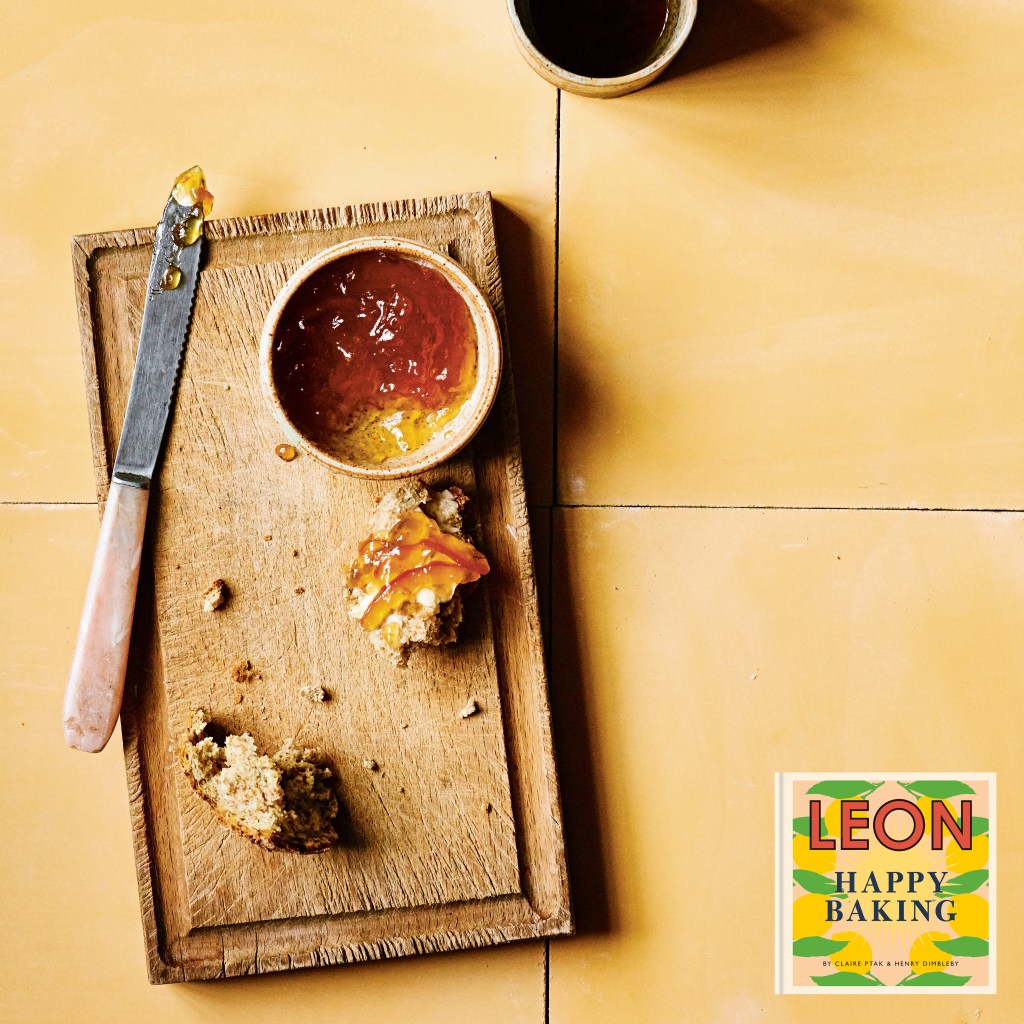Bread: The Basics from Leon Happy Baking

TYPES OF BREAD
All breads fall into four main categories, defined by what makes them rise:
SOURDOUGH
Sourdough is the most ancient form of leavened bread. It is made with a sourdough starter (see page 18), which can either be taken from someone else’s existing starter or created by leaving wheat and water to ferment naturally. The starter contains a symbiotic combination of natural yeasts and lactobacillus culture. It is the culture that creates the lactic acid that gives this bread its distinctive sour taste.
Sourdough has a reputation for being frustrating and unpredictable if you don’t make it all the time, because the starter needs attention. But starters are surprisingly robust- Henry, being chaotic and absent-minded, has had to bring many a forgotten and slimy starter back to life.
The thing that takes a bit of getting used to is the timing-the cycle for making a loaf is a minimum of twelve hours, and typically twenty-four. But the actual work involved is minimal (most of that time is spent waiting for the dough to rise), and the reward is a uniquely flavoured loaf that stays fresh for over a week.
YEASTED BREADS
Most bread is risen using baker’s yeast, Saccharomyces cerevisiae. It is the same yeast that is used to brew alcohol. It feeds on the sugars in the wheat and converts them into carbon dioxide, the gas that causes the bread to rise. It is easier to use than a sourdough starter because it does not require looking after and it is a good deal more vigorous – a loaf can rise in a couple of hours in a warm room. You can buy yeast fresh in blocks or dried in granules.
If you have not made bread before, this is where to startThe spelt loaf on page 14 is outrageously easy to make and equally impressive. You can also experiment with different flour mixtures and flavourings to create your own signature loaf.
If you have some sourdough starter in the fridge, you can add a little to traditionally yeasted breads to get a touch of the flavour in under half the time.
SODA BREAD
This bread uses bicarbonate of soda as its raising agentWheat flour is mixed with buttermilk (or sometimes yoghurt) and the lactic acid reacts with the soda to create bubbles of carbon dioxide, which raise the bread
It is a relatively modern bread, having become popular in Ireland in the mid-nineteenth century as a cheaper and faster alternative to yeast. It has a wonderful soft, cakey texture and a distinctive taste.
UNLEAVENED BREAD
This is a dough that requires no raising agent at allIt is the easiest of all breads to make.
This extract is from Leon Happy Baking by Henry Dimbleby and Claire Ptak.





